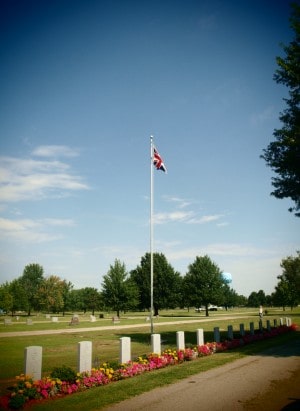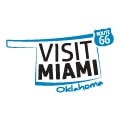
The Number 3 British Flying Training School, a branch of the Spartan School of Aeronautics, was established on June 16th, 1941, and continued to operate until August, 1945. With the coming of Spartan, the people of Miami saw themselves as an integral part of the war effort, although the United States was still officially neutral at the time. Their patriotic fervor was exemplified in a local advertisement at the time of the opening:
“Wings are the symbols of a new era in America and in Miami. A period of development in which Americans adjust their living to meet new needs- the needs of a democracy bent upon struggle for survival. Miamians are justly proud that the Spartan Flying School chose this city for training… a fellow democracy’s fighting forces. The throbbing, pulsing, beating roars motors in the air speak louder than a dictator, and it’s OUR answer to the taunts of tyranny and brutal militarism.”
In no time, Spartan began to take shape. It grew steadily in size, equipment, and spirit. The “campus” was divided in two sections. The first section was the flying field. It was a modification of the previous Miami Municipal Airport, with the large runway, taxi-strip, hangars, offices, and simulated flight room added by Spartan authorities. Several hundred yards to the east was the camp. It consisted of the Administration Building (formerly a deluxe tourist hotel), barracks, ground school classrooms, cafeteria, recreation hall, barber shop, and sports fields. The buildings and grounds were attractively landscaped and maintained. The arrangement of trees, shrubs, and flowers- particularly the red petunias that formed the insignia of the Royal Air Force- created a very pleasant setting at Spartan, a beauty which boosted the morale of both students and personnel.
The training program at Spartan lasted 20 weeks and averaged 180 students. In order to earn their “wings,” trainees, or “do-dos,” were required to successfully complete flight training and ground training. As they progressed through the primary, basic, and advanced flight phases, cadets learned the full range of combat flying techniques, specifically: instrument and night flying, acrobatics, air-to-air gunnery, dog-fighting, formation flying, dive bombing, and air-to-air gunnery. The Texan (AT-6), Voltee (BT-13), and Fairchild (PT-19) planes used in training the future RAFers became a familiar sight in the skies above Miami and the surrounding area.
In addition to their flight training, cadets received instruction in aviation ground school, participated in vigorous physical conditioning programs, performed military drills, and attended lectures on the war. Ground school subjects included aerodynamics. aircraft identification, airmanship, engines, instruments, meteorology, and regulations. All of which taught the trainees that there was much more to flying than getting a plane off the ground. By the time they completed the five-month long training program, they had logged over 200 hours flying time and even more in the classroom.
Despite their hectic schedule, the cadets found time for recreation and other diversions on the weekends. Many escaped the confines of the barracks and utilized the rugby field and tennis courts on campus. Others journeyed into town to see a movie, have a malt, or visit new-found friends. Indeed, the townspeople opened their homes to the homesick British boys and consequently, local grocers reported a sharp increase in tea sales. The lonesome teenagers endeared themselves to individual families, and they enjoyed and appreciated parties, teas, dinners, and dances held in their honor. One cadet spoke for his entire class in the campus newspaper “The Open Post.” He wrote:
The first and most lasting impression we get is the real value of American hospitality. It seems as if you can't do enough for us. Everything we do here is something to help us to excel at home. We thoroughly appreciate how helpful you all are and we're glad it was Miami they chose for us.
When the Number 3 British Flying Training School ceased operation in the summer of 1945, a unique chapter in the four-state and world history closed. During its four year existence, Spartan trained 1,493 cadets, many of whom served in the RAF and flew over Europe and North Africa.
Today, 69 years later, there are few vestiges of Spartan left. The land where it once stood is now occupied by manufacturing plants, the Miami Municipal Airport, and a family sports center. Although the ranks of those who remember “Churchill Field, Oklahoma,” has thinned over the years, there are still some who recall what it did and its place in history. It was an association of people, British and American, who worked together toward a common aim, who joined hands to defeat the evils of totalitarian aggression. The British boys, the instructors at Spartan, the citizens of Miami- integral, yet forgotten parts of the fight to save democracy around the world.
Fifteen Student Pilots were killed in training accidents at Spartan. They are all buried in the Grand Army of the Republic (GAR) cemetery just north of the old campus. We still honor those soldiers for their commitment and supreme sacrifice.
Mrs. Frances Hill, at her request, is buried alongside the graves these young soldiers. She faithfully and voluntarily tended their graves for 40 years until her death in 1982. She also kept in touch with many of the family members of the cadets assisting them in many ways. In 1989, The Number 3 British Flying Training School Association erected a monument in her honor with the following tribute:
Mrs. F.M. Hill of Miami, buried alongside, voluntarily tended these fifteen British airman's graves and helped their loved ones from 1941-1982. These selfless human actions were unknown to most. She was awarded "The Kings Medal for Service in the Cause of Freedom" by King George VI. Thanks to Mrs. Hill from the graduates of Number 3 British Flying Training School Association.


